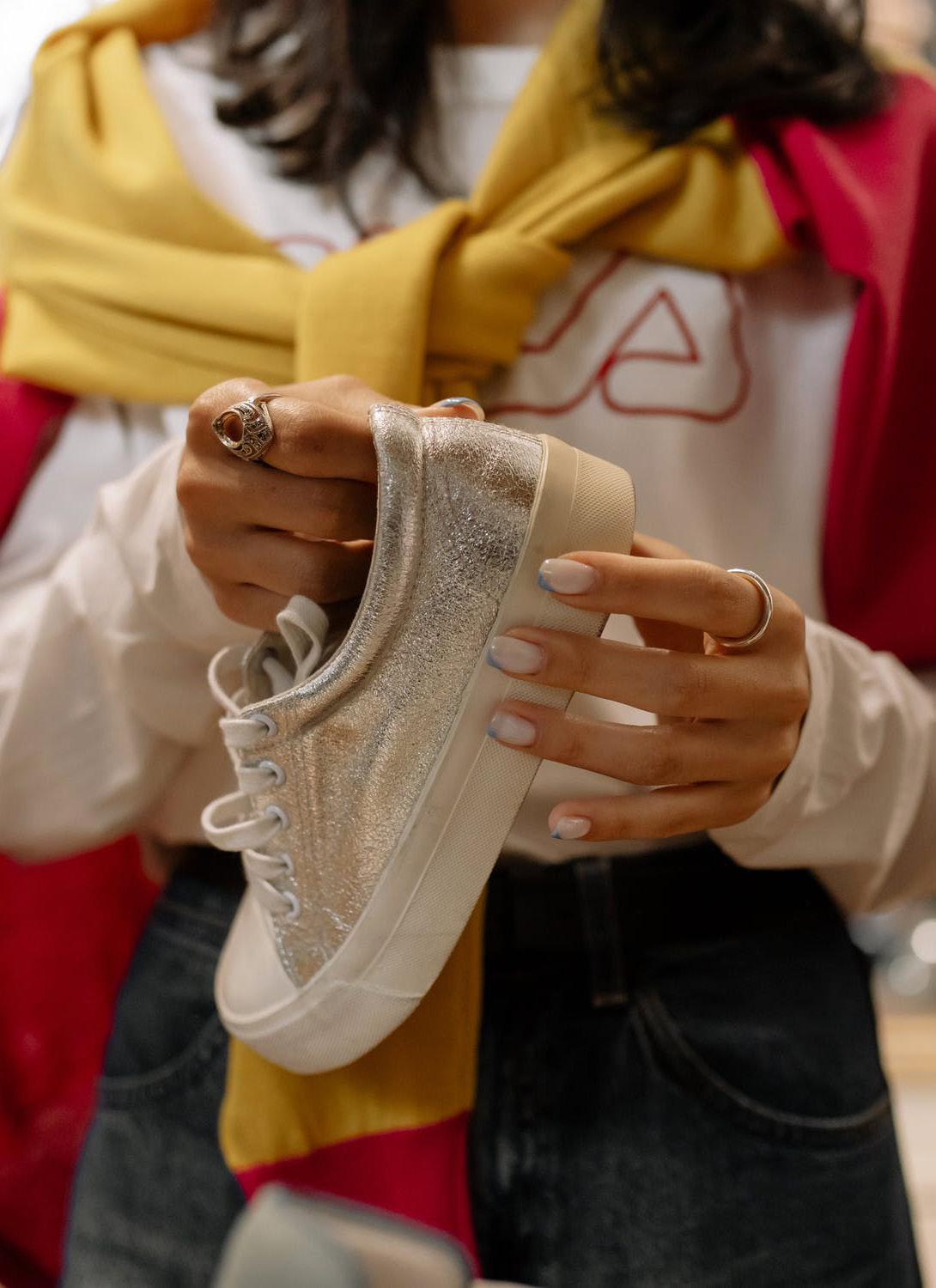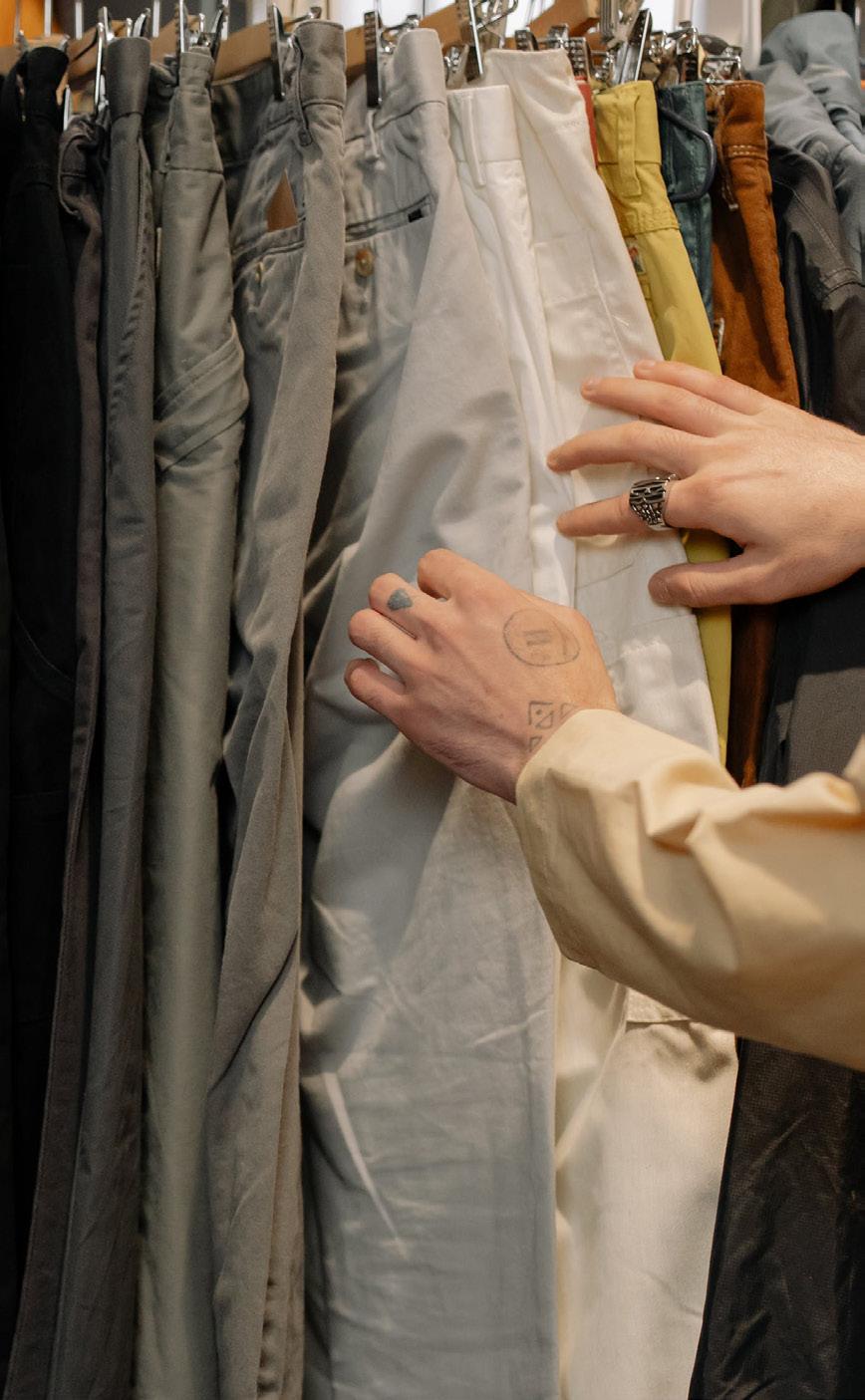
4 minute read
The global trend of the old thrift shops
The global trend of the old thrift shops: Considering all sides. written by Tsvetina Durcheva
Thrifting has been a trend amongst young people for a while, however you know it has gone mainstream when your parents start quoting statistics about the thousands of litres of water needed to produce one cotton T-shirt (FYI, it’s 2700, their source was maniastores.bg)
Advertisement
Evidence of people wearing second-hand clothing and cross-class dressing (dressing out of one’s means) has existed since Elizabethan times, although the latter was illegal. At the end of the 19th century, people could finally afford to throw away old clothes, which in earlier times would
be reused as cleaning rags or chair filling material. Unwanted clothes and accessories were
repaired and resold for charity to the underprivileged and the immigrants. Sadly, it continued to be seen as unacceptable and thrift shops tried to overcome the stigma by decorating their windows and putting up displays, imitating other stores. Nowadays, it seems they have succeeded in blending in with these other stores with the
added bonus of no prosecution if one is seen wearing silk.
The main reasons behind the rise in popularity of thrifting are the desire to reduce pollution,
Image taken from Pexels Photo
Image taken from Pexels Photo wastefulness, and find one’s own style, as well as the low prices for quality items. There is a rising pressure from organisations, influencers, and even people close to us, to think about the environment and say “no” to fast fashion. Yet, clothes that could be considered sustainable often
are too expensive. Thrift shops are a great alternative and there is the possibility of finding items

that would be unaffordable if new.
The growing trend of second-hand stores mixed with technological developments has resulted in more convenient ways of thrifting. Now we can choose from websites, social media accounts, even apps, which send customers notifications whenever there is something “new”. On the one hand, this is nice. It saves people time and there is always the option to shop or donate. Or both. So, we can go completely green, both buying and giving clothes that we no longer want, thus decreasing demand for new clothes to be produced.
On the other hand, when looking closely at the design and execution, what these make me think is thrifting is not much different from shopping for new clothes. Thrift.plus has an app, advertised on their website with a photo of the latest iPhone with the app on, a device most thrift shops’ original clientele would not be able to afford. They even have a boutique (separate from cheaper options, of course) where worn designer pieces can go for hundreds of pounds. This makes me wonder, who are they targeting? Most people wouldn’t be able to afford £222 for a blazer even if
it is new. That is not
to say there are not plenty of affordable alternatives of lower
quality or from cheaper brands but this just shows the influence that
socio-economic status
has even in thrift
shops. It stops being about providing cheap clothing or saving the Earth and it becomes
more and more about
making money.
One can argue that part of the profit goes to charities, but this varies from
store to store. Some
organisations like the British Heart
Foundation have a
better percentage— around 78% of their

Image taken from Pexels Photo
profit goes to fund their cause. Others go lower, around 30%. Some, like the global European second-hand online store remixshop. com, do not mention profit going to charity at all. But even if they did send profits to charity, it is unlikely that they would miss the opportunity to brag, I mean, to inform customers. When a company profits off people who cannot afford new clothes, one can question said company’s morality and ethics.
Image taken from Pexels Photo Still, their popularity thrift shops owe not to the poor. Apparently, celebrities thrift shop as well. Helen Mirren is an example I genuinely like, as she shops second-hand when travelling to a place with a cold climate and donates the clothes back when her trip ends. However, with the media portraying these sensible rich

people going around in second-hand outfits, it is not difficult
to see that this is
an excellent way to improve their status as people who care about the environment and are
doing their part. Then again, when celebrities can afford clothing made from state-of-the-art, biodegradable materials, one might ask herself, why are they taking clothes that could be bought by someone who actually needs them (even if they will give them back later)?
With the thrifting trend comes a danger. As popularity and demand have risen, but supply has remained the same, thrifters have noticed an
increase in prices. This means thrift shopping is now not as affordable as
it used to be, leaving it at risk of losing its
very purpose.
Thrifting can be a way to help reduce pollution. However, one shouldn’t forget that it is essentially to provide clothing for people who do not have the means
to buy new. People should still thrift shop if they want to, but they should also find other ways to reduce their carbon footprint, including lowering the number of clothes they buy and donating old ones that they no longer

wear.








